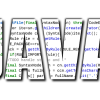Microservices architecture is a widespread approach to building applications, where the application is divided into small, independent services that can be deployed and managed separately. Building a microservices architecture requires careful consideration of the technologies and languages used to develop the services. Here are the top technologies and languages to pick for building microservices architecture.
- Docker
Docker is a containerization platform that allows you to package an application and its dependencies into a single container. This makes it easy to deploy and manage microservices in a distributed environment. Docker is a popular choice for building microservices architecture due to its scalability, portability, and flexibility.
- Kubernetes
The Cloud Native Computing Foundation (CNCF) maintains Kubernetes, an open-source platform for container orchestration. It automates the management, scaling, and deployment of containerized applications and was first developed by Google.
Kubernetes is designed to manage containerized workloads and services in a distributed environment. It provides a platform for deploying, scaling, and managing applications, making it easier to build and manage complex containerized systems. Kubernetes enables developers to deploy and manage applications in a consistent and scalable way, regardless of the underlying infrastructure.
- Spring Boot
Spring Boot is a popular Java-based framework that simplifies the development and deployment of microservices architecture. It provides a lightweight, opinionated approach to building microservices that makes it easy to get started and scale as needed.
- Node.js
Node.js is a popular JavaScript-based runtime environment that is used for building scalable, high-performance applications. It is a popular choice for building microservices due to its event-driven, non-blocking I/O model, which makes it easy to build responsive and scalable services.
- Go
Go is a modern programming language developed by Google that is designed for building scalable, high-performance applications. It is a popular choice for building microservices due to its simplicity, concurrency, and low memory footprint.
- Python
Python is a prevalent programming language that is widely used in data science and machine learning. It is also a popular choice for building microservices architecture due to its simplicity, ease of use, and extensive library support.
- Rust
Rust is a modern programming language that is designed for building fast, reliable, and safe systems. It is a popular choice for building microservices architecture due to its memory safety, concurrency, and low-level control.
In conclusion
Building microservices architecture requires careful consideration of the technologies and languages used to develop the services. Docker, Kubernetes, Spring Boot, Node.js, Go, Python, and Rust are some of the top technologies and languages to pick for building microservices architecture. By choosing the right technologies and languages, developers can build scalable, reliable, and high-performance microservices architecture that meets the needs of their business.




